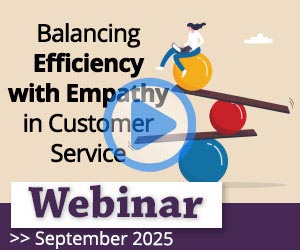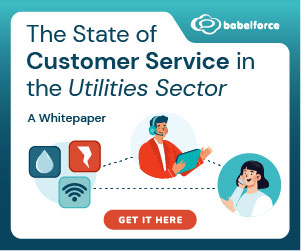In today’s fast-paced customer service environment, successfully overcoming objections is key to turning hesitant prospects into satisfied customers.
By mastering a few fundamental strategies, call centre agents can confidently navigate challenging conversations and foster trust, ultimately driving more positive outcomes.
To find out the best strategies to use, we spoke to three industry veterans in sales and customer service to get their take on handling objections in sales and overcoming objections.
Objection Handling Techniques
1. Gain Permission to Talk Right Away
The reason why it is good to get permission at the start of the call, maybe even in your greeting statement, is because it will seem less like you’re barging in on somebody’s day and ambushing them into a conversation.
This simple strategy will help you to avoid classic sales objections later in the call, such as:
- “I don’t have time for this today”
- “I’m busy at the moment”
- “I’ll have something else that I need to attend to”
Anthony Stears, MD at The Telephone Assassin, recommends using the following polite greeting, which assumes now isn’t a very good time.
This greeting is: “Good afternoon [NAME], I was just hoping to chat to you for a couple of minutes, but I’m assuming that now perhaps isn’t the best time, so I wondered if there’s a better time to call you back?”
The beauty of doing this is that it is very polite and it makes it so easy for the potential customer to get out of the call that they instantly start thinking that you can’t possibly be in phone sales.
The beauty of doing this is that it is very polite and it makes it so easy for the potential customer to get out of the call, that they instantly start thinking that you can’t possibly be in phone sales.
Just as likely, the client may think that you might possibly be in sales, but you are probably not that good at it, therefore you’re not to be feared.
According to Anthony: “At least one in every three people, when you use that technique, will say: ‘Go on then, I’ve got a few minutes free now, what is the call about?’, and that is because you have managed to create curiosity into what the call is about, as opposed to just trying to impress them.”
For more advice on overcoming specific sales objections such as: “I’m busy at the moment,” read our article: Handling Sales Objections Over the Telephone
2. Find the Way Behind the Objection
It’s very easy for sales people to hear an objection and quickly go on the offensive, throwing unnecessary information at clients. This only serves to confuse the potential customer.
As the old cliché goes: we have two ears for listening and one mouth for talking. So, evaluate what is being said, and take the time to clarify so you can be sure you’re about to handle the right objection.
The second part of this is making sure that the sales objection is real, according to Paul Lunny, an experienced sales trainer.
More often than not, a prospect will throw something at you because it’s easier than telling you what is going on in their mind.
Paul says: “More often than not, a prospect will throw something at you because it’s easier than telling you what is going on in their mind. I call these ‘primary objections’, and they’re frequently false.”
What we are instead looking for is the ‘why’ behind the sales objection. If someone says they can’t afford the purchase, is that because they don’t see the value? Maybe they don’t want to make the wrong purchase? Or do they think it won’t really solve the problem they have?
The good news is that most potential primary objections that customers fall back on are predictable, meaning that we can plan ahead for how we overcome their sales objection.
3. Get Ahead of Further Sales Objections
To effectively handle sales objections, it’s crucial to anticipate and address them proactively. As Paul notes, “Most clients need to be closed at least five times, if not more. Just because you’ve answered one objection doesn’t mean you’ve answered them all.”
If a prospect doesn’t convert, there’s likely something you’ve missed. Simply asking for the sale can reveal any unresolved concerns.
A great objection handling technique is to think like the client. Consider these key questions:
- Do I really have a problem that needs solving?
- If so, is this the product for me? Is there a better one out there?
- Is this the right person to buy this product from?
- What will people think of me for making this purchase?”
These concerns can be endless, so after addressing one objection, ask, “Is there anything else you’re concerned about?” In most cases, the client will provide additional feedback.
This strategy helps you get ahead of potential objections and increases the likelihood of closing the sale. Handling objections thoroughly ensures that no concerns are left unaddressed, making the client more confident in their decision.
4. Share Success Stories
When we approach a sales call, we will have prepared a pitch beforehand. But an experienced phone salesperson won’t be generic in their pitch, they will instead tailor their pitch to the potential client – especially in the B2B space.
So when we are pitching to a client we want to think about the work that we have done with companies or people who are similar in some way to our potential customer.
Then, once we are on the phone with them and the opportunity arises, we should be looking to share success stories that we have ready prepared, so that the client will be able to relate to it.
This is according to Anthony Stears, who discusses this tactic below in a video about perfecting your sales pitch.
In the video, Anthony also discusses the value of creating a library of success stories, to save on preparation time before each sales call, and using success stories to “upsell”.
For more advice from Anthony, read the following article: 10 Innovative Ways to Create Customer Value
5. Build the Customer’s Confidence in You
The purpose of sharing success stories is to build the customer’s faith in you. But we cannot stop there. A potential client needs to have full confidence in us for us to achieve sales success.
So, alongside our success stories, the customer may also need more information about who you are and why you are the person to deliver this service for them.
Put simply, the prospect needs to have 100% confidence in:
- Your product’s ability to solve their problems
- Your product’s quality
- You

Paul Lunny
This, according to Paul Lunny, is the holy trinity of sales.
Paul says: “Making sure that you understand these objections, and that you can resolve them, is going to help you increase your closing rate.”
“I always say to the people I train: ‘Unless you can create value above the cost of the product, you are going struggle to close to your full potential.’”
6. Offer a “Test-Drive”
By building rapport at the start of the call and then establishing credibility – through building the client’s trust in you – the next step that you may want to make is offering a “test-drive”.
The customer will not have full confidence in your product/service until they get to try it out, so a test drive can help to overcome any remaining sales objections.
However, that is not the only benefit of a “test-drive”, because when we take this step, we can also create a sense of urgency – which, according to Anthony, can be highly beneficial in sales.
We want to get people to buy in to the value of your product and the best way to do that is to get them interacting with your offering.
“We want to get people to buy in to the value of your product and the best way to do that is to get them interacting with your offering,” says Anthony.
“Adding this stage will emphasize the quality of the product (or service) and will create an immediate buzz around it.”
Just consider this statistic: you are 78% more likely to buy a car once you’ve driven it – according to Anthony’s research.
So, think about what kind of test drives are relevant to your product that will demonstrate the value that you can bring to your potential customers.
This could include anything from tip sheets, to discovery meetings, demos and trials.
7. Apologize When Something Goes Wrong
In call centres, effective objection handling is crucial, especially when something goes wrong. While there are many techniques and models for overcoming objections, one of the most important – yet often overlooked – strategies is simply being human.
Humans have been communicating for centuries. Why should it be so difficult?

Karl Wright
Karl Wright, Director of International Service Operations at Vocalink, highlights that “We have all been in situations where we have been annoyed or have experienced some other negative emotion as a result of something not being quite right,” says Karl.
“Don’t be patronizing and say: ‘I’m sorry you feel that way.’” Instead, express genuine regret for not meeting the customer’s expectations, even if those expectations seem unreasonable.
This approach aligns with the principle of treating people how you’d want to be treated. In objection handling in call centres, it’s essential to listen closely to what the customer is truly asking for.
Offer helpful solutions and avoid scripted responses that feel insincere. By focusing on empathy and understanding, you create a smoother experience for both the agent and the customer, making objection handling more natural and effective.
For more on offering a sincere apology to customers, read our article: Customer Service Apologies – Keeping Sorry Fresh and Sincere
8. Neutralize Negative Emotions
The person you are talking to is looking for the best outcome, regardless of the emotion behind their objection.
Recognize their emotional state, but don’t allow that to be the focus of the sales objection. Listen to what the real issue is: what is the desired outcome for all parties concerned?
As Karl says: “You should always try to keep your own emotions and personal beliefs out of it and stay on point with regard to the real issue. Don’t get pulled down avenues like: ‘How would you feel?’ or: ‘What would you do?’”
“Remain calm and reassuring by speaking with a low, clear voice – avoid raising your voice at all costs, unless in a controlled way to regain control of the conversation.”
The key thing here is to consider all possibilities for a resolution and then work through them until you get to the one that works.
Not all possibilities can be followed through, but they should be at least considered – focus on what you can do to rectify the situation.
Getting too defensive on behalf of the company that you represent is a big customer turn-off when overcoming sales objections.
For more on controlling emotions in the contact centre, read our article: 7 Steps to Evoke the Emotions You Want From Your Customers
9. Arrange a Follow-Up
A key best practice whenever you make an outbound call – whether that’s in sales or customer service – is to always take final responsibility for the next time that you’re going to speak to people.
This helps to make sure that you are constantly teeing-up when the next call or conversation is going to be, so the customer doesn’t forget about you and, more importantly, you don’t forget about them.
By constantly teeing-up when the next call or conversation is going to be, you can prepare for any sales objections that might arise in the next contact.
An example of how this can work very well is when you sense that the customer is “semi-interested”, but their objection is that they do not have an imminent need.

Anthony Stears
“In this scenario, I would ask people if they would get the chance to look at some information that I’m going to send them in the next week or two,” says Anthony.
“I believe that’s a reasonable timeframe to give somebody to look at the information, and 80% of people, when asked that question, will say: ‘Yes, I’m sure I will’.”
“Then, leave the door open to the customer to come back to you. But I would tell them that in two weeks, I’ll give them a quick courtesy call, to ensure that it got through their spam filter. I can then highlight to the customer why I sent across the things that I did.”
You can also take final responsibility on voicemails too, by telling the customer that you will follow up your call later in the week, when you’re back in the office.
When you phone back, the customer can’t then rationally object and get angry, because if they didn’t want you to call on that day, they would have responded.
10. Keep Practicing to Build Confidence
Like any skill, the more you practice, the better you get. This is especially true for handling sales objections, which often require quick thinking and adaptability.
Confidence is key, and if you’re not fully comfortable with a particular objection-handling technique, rehearsing through role-playing can help sharpen your responses and give you a more natural delivery when speaking with customers.
By practicing regularly, you not only refine your ability to address common objections but also prepare for unexpected challenges, ultimately making you more adept at navigating conversations smoothly.
Consistent practice helps you develop the confidence to respond to objections seamlessly, no matter how complex or unexpected they may be.
Clients seek reassurance, and they tend to trust those who come across as knowledgeable and professional. When you reduce their perceived risk and address their concerns, you help them feel more secure in their purchasing decisions.
As Paul Lunny says: “Who do you want performing your surgery, the medical student or the surgeon who has performed the operation thousands of times?”
To encourage your sales people to keep practising, share the following cheat sheet with them, which may provide even more great ideas: Training Cheat Sheet – Handling Customer Objections
For more on better handling sales calls in the contact centre, read our articles:
- Top Tips for Selling Over the Phone
- The Right Words and Phrases to Use on a Sales Call
- 5 Tips to Improve Your Call Centre Sales
Author: Megan Jones
Reviewed by: Jonty Pearce
Published On: 27th May 2020 - Last modified: 14th Aug 2025
Read more about - Skills, Anthony Stears, Call Handling, Empathy, Language, Objection Handling, Rapport, Skill Development, Training and Coaching
















